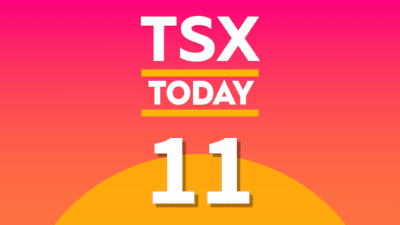With the New Year underway, Canadians can now begin putting their new year’s resolutions into action.
Many goals set at the beginning of the year, unfortunately, aren’t carried through the entire year. I’ve put together three easy-to-follow financial resolutions for Canadians.
Not all may apply to your specific situation, and that’s okay. If you’ve managed to check off each of these three resolutions, congratulations. You’re ahead of the curve compared to the average Canadian.
New Year’s resolution #1: Opening the right accounts
Before even considering savings rates or investing, Canadians need to make sure that they have the appropriate accounts in place.
Most Canadians are likely already familiar with the Registered Retirement Savings Plan (RRSP) and Tax-Free Savings Account (TFSA). However, it’s worth reminding investors of the pros and cons of each account.
RRSPs are typically used for retirement savings. Contributions to an RRSP are done pre-tax, so once a withdrawal from an RRSP is made, the investor will need to pay an income tax on that withdrawal.
TFSAs allow post-tax contributions, so withdrawals can be made at any time, completely tax-free. In addition to that, all capital gains and dividends are completely out of reach of the CRA.
Due to the TFSA’s flexibility, it’s typically used for short- to mid-term savings objectives.
There is no one-size-fits-all account for Canadians. The TFSA and RRSP should be used in tandem as each offers its own unique benefits.
New Year’s resolution #2: Setting goals
In terms of setting a savings goal, I’m not necessarily talking about setting a specific number that you’d like to have in your RRSP or TFSA at the end of the year.
The ultimate savings goal could still be many years away. As a result, those investments may have a high level of risk, meaning they could be very volatile from year to year.
My point is that setting a goal of much money you’d like to have in your bank account at the end of the year is difficult to set because you cannot predict how the market will perform during any given year. Rather, Canadians should look to set a goal of a specific savings rate that they’d like to hit. That savings rate would equal the percentage of your paycheque that is being saved. That way, even if the market has a terrible year and drops 10%, but you increase your savings rate from 5 to 10%, that’s an excellent year.
Finally, do yourself a favour and automate your savings. You’d be surprised to see how easy it is to increase your savings rate by a percent or two. That way, you can gradually increase your savings rate by one percent at a time throughout the year.
New Year’s resolution #3: Reviewing your portfolio
Now that you know which types of account you should be leveraging and what your savings rate will be, now comes the time to review your current investments.
You should be asking yourself, do you have the right investments to reach your goals? Are you comfortable with the level of risk in your portfolio today? Perhaps you’d be willing to take on more risk in order to reach your objective faster.
For Canadians looking for one of the simplest and most cost-efficient investments for a long-term goal, such as retirement, investing in exchange-traded funds (ETFs) would be a wise choice.
The beauty of an ETF is that it is a very hands-off investment with the potential to deliver capital appreciation or passive income, or both. Canadians don’t need to spend hours combing through financial statements to find winning stock picks.
ETFs group together different types of securities, such as stocks, to provide investors with a more diversified and balanced portfolio.
There is a cost to owning an ETF, but it’s very minimal in comparison to similar investments, such as mutual funds.
Another key selling point of ETFs is that there are a number of different ones to choose from to match your objectives.
If you’re very bullish on the U.S. economy, the Vanguard S&P 500 Index ETF is a solid bet for you. That ETF has returned growth of close to 75% over the past five years. That’s not even including its 1.3% dividend yield either.







